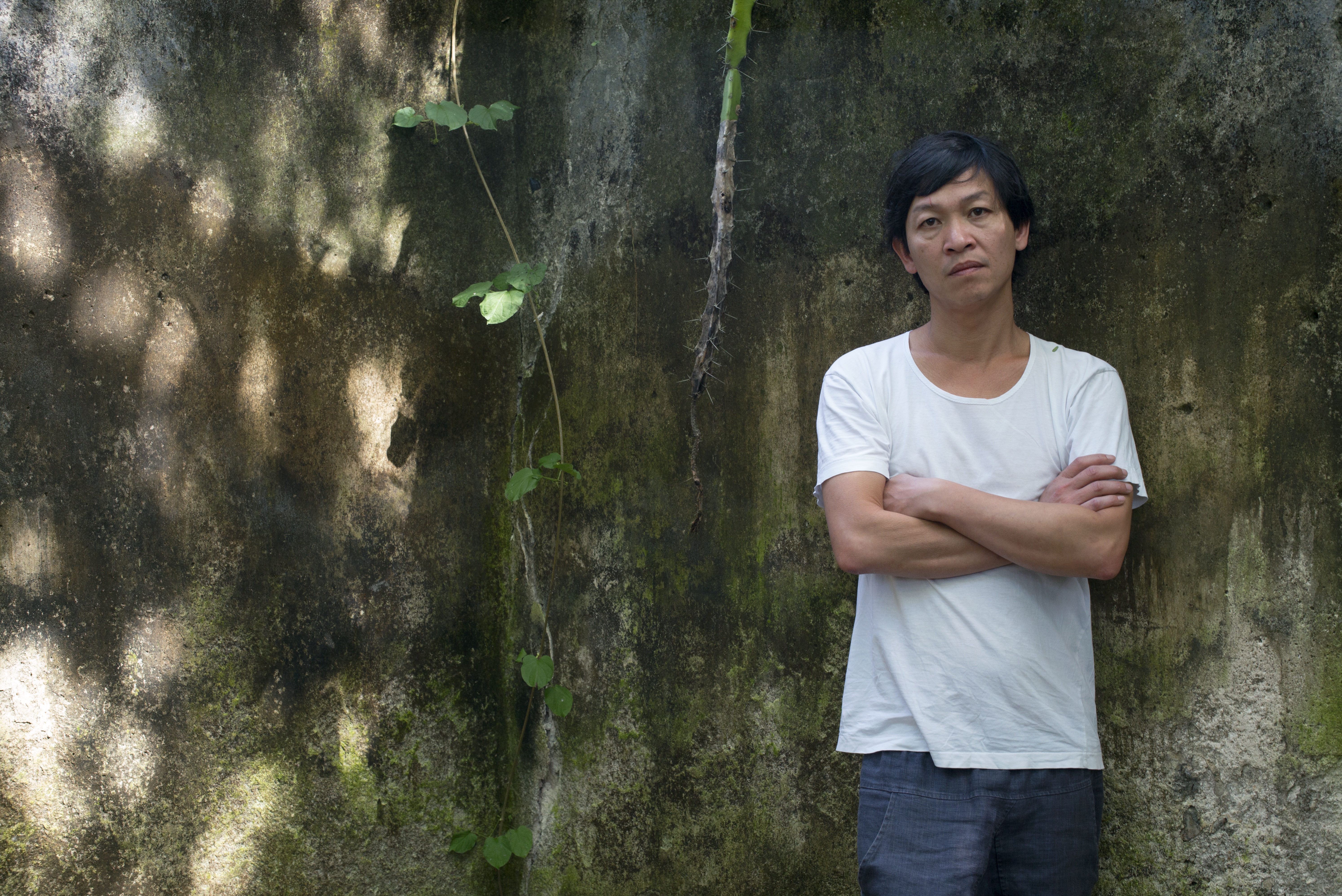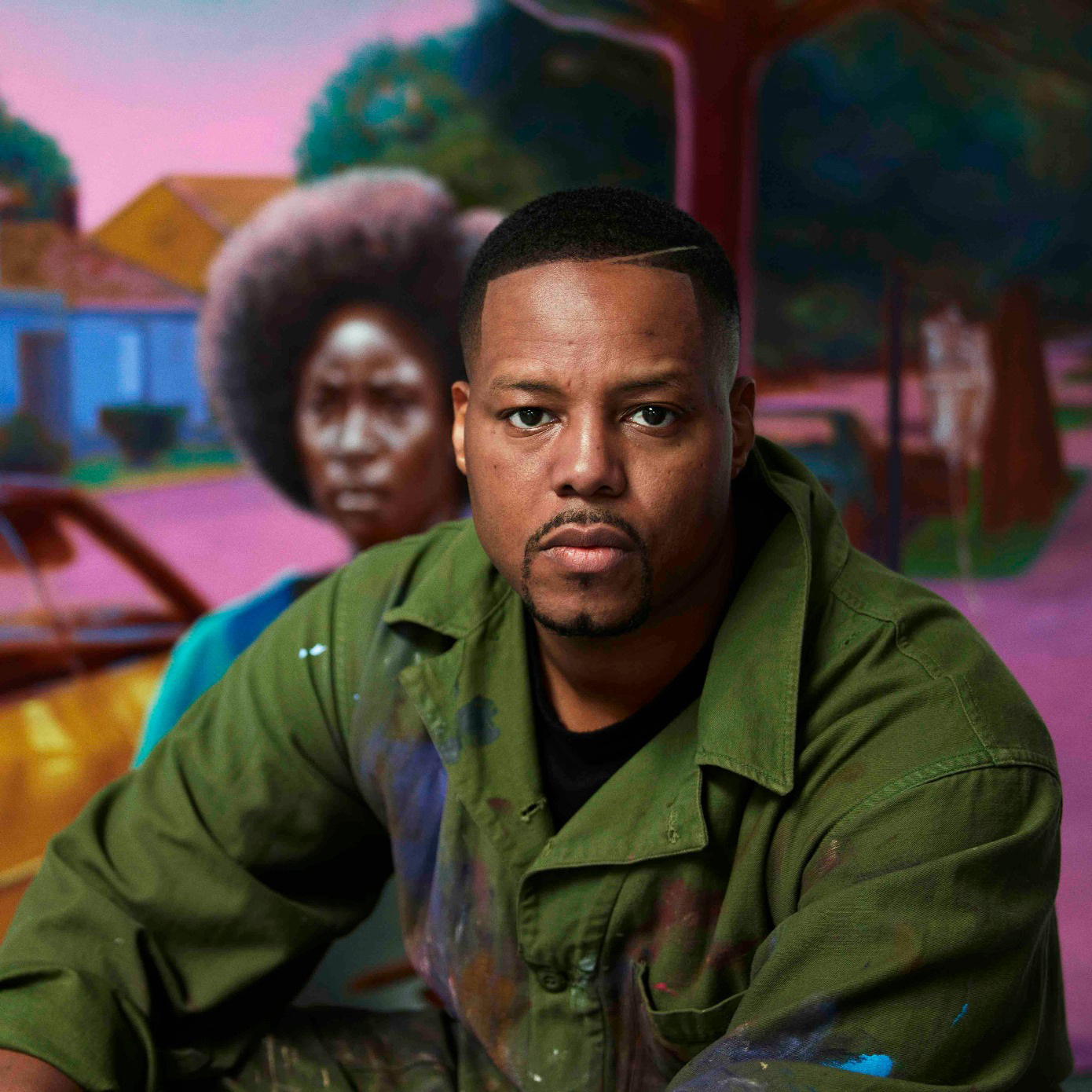
All kinds of rumors and mythologies cling to Danh Vō. As a four-year-old refugee at sea, Vō and his family were picked up by a Danish freighter, eventually landing him in the Copenhagen suburbs. At 24 he participated in— and won—one of Denmark’s first reality-TV shows. He has changed his name at least twice. At 35 he rejected the invitation for a solo show at the Guggenheim. Three years ago, when a court ruled that Vō had to produce a new work for the collector Bert Kreuk, with whom he was embroiled in a legal dispute, Vō proposed to write SHOVE IT UP YOUR ASS, YOU FAGGOT on the walls of Kreuk's Panama residence. And now, six years after he first rebuffed the museum, Vō is taking over the Guggenheim's rotunda with his reverberant sculptures and installations.
Where exactly reality blurs into lore in Vō's life is difficult to pinpoint, and for most of his career he has reveled in the mystery. His installations are studies in ambiguity, dense with symbolic weight, layered with contradictions. In an early work, Vō gathered his grandmother's washing machine, refrigerator and television set—all gifted to her by a European relief program for refugees—and stacked the objects into a sardonic totem pole, later replicated as the marker for her grave. In a more recent work, second-century marble statues are sliced across with a diamond blade and nestled into wooden crates bearing the logos of Johnnie Walker whisky and Carnation milk, while sentences from the 1973 film The Exorcist are calligraphed by Vō's father onto a window. The artist’s tableaux are delicate, elegiac and infused with subtle narratives. But like a Delphic oracle, Vō leaves few clues as how to read them.
"I have been terse with information because I wanted to give space for the viewer to look at the work without preconceived ideas," says Vō, standing over a model of the Guggenheim's rotunda. "But that doesn't hold true anymore. There has been a substantial amount of writing about my work, and thousands of copies of that writing. It just gets out of control. For this show, I wanted to organize all this information."
As his first American survey show, the Guggenheim exhibition marks a turning point for the notoriously evasive artist. Known for brushing off questions with soft laughter and enigmatic answers, Vō has previously refrained from giving public talks. When asked about the conceptual foundations of his works, Vō prefers to say he stumbled upon them. "I was born under a lucky star" is his favorite retort. For the Guggenheim show, however, Vō has decided to engage the audience directly, taking on an active role in framing the conversation about his work.

"When you are a young artist, you have the possibility to be more hermetic, which I find to be a quality. But there's a certain time where you have to reclaim meaning. Because, when your work becomes public, there is a tendency that everybody can do or think whatever they want about your work. And I don't think that's true."
During the exhibition, Vō will give an artist talk and engage in a series of conversations with interlocutors who have personal relationships to the stories playing out in his reclaimed objects. For the first time in his career, the inscrutable Vō is leaving clues.
"That's life in general," Vō says, pointing to the maquettes like a general overlooking a battlefield. "You change. And I had a feeling that I had to reconquer some of the meaning."
Vō's practice is like that of the hunter-gatherer. He scours cities, factory workshops, auctions, family cabinets to find objects suffused with complex histories of colonialism, personal ambitions and violence. Having lived for periods in Vietnam, Denmark, Germany, Thailand, France and now Mexico City, Vō has an eye for objects charged by their status as historical bystanders. In 2011, Vō acquired the three chandeliers that glittered above the 1973 signing of the Vietnam Peace Accords in the ballroom of the Hotel Majestic in Paris. And in 2013, he convinced his gallerist Marian Goodman to fork over $146,000 for two leather and mahogany chairs used by former defense secretary and Vietnam war strategist Robert S. McNamara.

Stripping the chairs of the upholstery, Vō presented the bare wooden frames that had once held the weight of so many politicians and generals as they heaped devastation onto the world.
Vō relates a story of his father, an ardent anti-communist, who was forced to flee his country when the U.S. signed the Peace Accords and abandoned the South Vietnamese cause. "When I was deinstalling the chandeliers at the Hotel Majestic, I took my father there. I wanted him to see this historical space that had affected him so much. On the way in the taxi, he kept complaining that we were going to the room of betrayal, to the room of death. But when he entered, and all the chandeliers were lit, the only thing he could say was, ‘Danh, I think the Queen of Denmark must have one of these in her palace.’ I think that's when objects are beautiful. Because of course all he saw the design of the object. When you enter a ballroom, you leave everything behind. You leave your sorrows behind."
Soon Vō will take over another historical space, as he makes subtle interventions to Frank Lloyd Wright's Guggenheim architecture. The rotunda's ceiling will be altered to let in natural light; original features of the building, like a series of planters, will be excavated. Asked if there's a specific intention behind these architectural interventions, or if they are yet another elliptical Delphic statement, Vō laughs softly.
"I learned very early on that you can't control the viewer. We all read through the information we carry. Objects have all these possibilities of meanings and readings and they all exist simultaneously. And it's in these contradictions that objects turn out to be beautiful."




